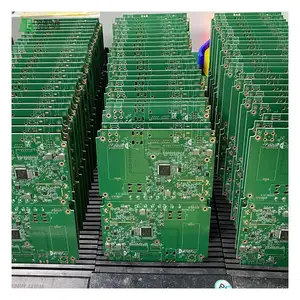
All categories
Featured selections
Trade Assurance
Buyer Central
Help Center
Get the app
Become a supplier












Nếu bạn muốn nâng cao hiệu quả sử dụng máy tính của mình, hãy truy cập vào Alibaba.com và chọn trang phù hợp. dual ddr2 800 bo mạch chủ sẽ phù hợp với nhu cầu của bạn. Khi khả năng xử lý của máy tính tăng lên, nhu cầu nâng cao. dual ddr2 800 bo mạch chủ cũng đang tăng .. dual ddr2 800 bo mạch chủ là những yếu tố quyết định chính đến cách máy tính của bạn hoạt động. Chúng cho phép bộ xử lý đọc và ghi bất kỳ loại dữ liệu nào rất nhanh chóng bất kể nó ngẫu nhiên như thế nào.
Các. dual ddr2 800 bo mạch chủ có nhiều lựa chọn đảm bảo rằng tất cả những người mua sắm đều có được lựa chọn thích hợp của họ. Với không gian lưu trữ tuyệt vời, những. dual ddr2 800 bo mạch chủ được điều chỉnh để cho phép máy tính của bạn lưu trữ tất cả các loại thông tin mà nó yêu cầu khi chạy các quy trình khác nhau để máy tính truy cập chúng và tăng hiệu quả. Các. dual ddr2 800 bo mạch chủ tự hào về tốc độ truyền dữ liệu cực kỳ nhanh chóng để bộ xử lý đọc, truyền và truy xuất dữ liệu từ chúng trong vòng micro giây.
The. dual ddr2 800 bo mạch chủ được tìm thấy tại Alibaba.com tương thích với nhiều thiết bị. Bất kể bạn đang sử dụng loại máy tính nào, bạn sẽ tìm thấy. dual ddr2 800 bo mạch chủ để đối sánh nó. Vật liệu và công nghệ được sử dụng để làm ra chúng rất chắc chắn, đảm bảo độ bền. Bộ tản nhiệt chắc chắn của chúng đảm bảo làm mát tối đa, tránh quá nhiệt và duy trì hiệu suất tối đa. Những cái này. dual ddr2 800 bo mạch chủ được cung cấp bằng vật liệu đóng gói chất lượng hàng đầu để đảm bảo an toàn cho bạn.